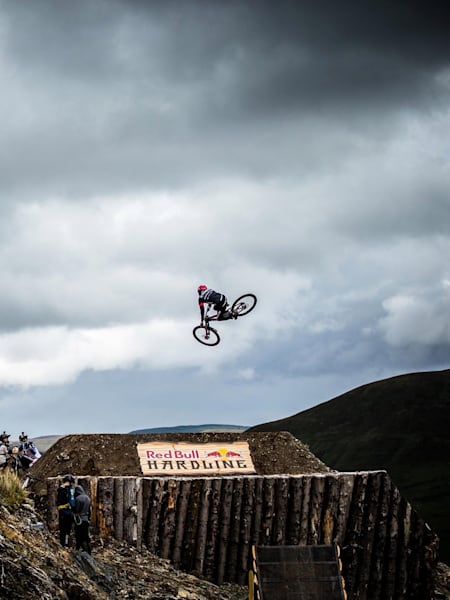Bike
A nicely flowing trail is made all the better through the addition of jumps – big or small. Whether you are comfortable with huge airtime or you are only just getting to grips with that wheels-off-ground feeling, some well-built kickers, tables and doubles on your trail build could help make it a true masterpiece.
Nikki Whiles of Trailcraft Track Construction knows all about jumps (check out the recently developed Mountain View Bike Park in Wales). We asked him to help give some insight into creating a safe, long-lasting jump.
Jump basics
The basis of a good jump that won’t land you or anyone else in hospital is its shape. While a bit of trial and error is perhaps necessary to learn what works at what scale, consistency is key:
"Long take offs with constant transitions that don’t suddenly change shape help make a jump as safe as possible. The same goes for the landing – there should never be a sudden change in shape. Generally, long, mellow take offs and landings are the safest. Sudden steepening causes accidents."
The tools you'll need to build
What tools to build mountain bike jumps? The answer is simple: anything you have to hand. A shovel and wheelbarrow or flexi tubs (see Part 1 on what tools you'll most likely need) will help move the large amounts of material needed to create the jump:
"Even if you are lucky enough to have a digger to help shift lots of dirt, final shape everything by hand (unless you’re a wizard in the digger). If you can’t use a digger, then a simple shovel and wheelbarrow or flexi tub does the trick. Whatever gets the dirt shifted!"
The best materials for jumps
At the base of a good jump that retains its shape is the quality of the material that goes into it. Piling up fallen branches and logs might seem like a quick way to building up a jump, but it simply won’t last. Before long, you’ll have holes in the take-off and landing and you’ll only have to rebuild it:
"Good sub soils are the best for creating a lasting jump. Don’t use organic top soil or anything soft. Dirt that will go hard and not be soft in the long run will help you shape something perfect that’ll stay that way. Try to avoid using logs to fill the jump cores – they will eventually rot and collapse."
How big should the jump be?
The size of your jump depends somewhat on guesswork. With experience you’ll soon be able to gauge how high and long to make it. Of course, build to suit your ability:
"It’s not unusual to tweak jumps after a few test runs; it’s difficult to get them perfect first go. For a big national-standard BMX track everything is measured out, but for most jumps it’s all about making your best guess."
Use your instinct and trial and error to shape the jump
Shape comes down to what you want to achieve from your jump. If you visit a few flow or jump trails (such as those at BikePark Wales, which Nikki helped build), you’ll soon start to notice the patterns. Long, mellow take offs are best at high speed, steeper ones will send you up high:
"I just shape it by eye – by what looks right. There are no hard rules. You’ll know when it looks right. If a jump is built for speed you will want a mellow lip. If it’s built for height (like a step up) you will want it steeper towards the end of the transition."
How to make the jump last
If you build it well from the start, a jump, just like any feature on your trail, should last a long time without too much maintenance. The material you use is vital, and it’s not just the transitions that are important:
"Build jumps with good dirt only and try to avoid making the sides too steep. Although it looks cool to have steep sides, it doesn’t give the jump much support for future weathering. The more material surrounding the structure, the stronger it’s going to be."
Many thanks to Nikki Whiles and TrailCraft for their help in preparing this article.
Check out the rest of our trail building series below:










